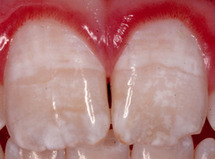What Do We Know About Fluoride?
Earlier this year, officials in Pinellas County in Florida decided to remove the cavity-fighting chemical from its water supply. Was it a mistake?
The government has been drugging us for years.
Since the 1940s, municipalities across the United States have been voluntarily adding fluoride to their water supplies. Fluoride, as we all learned in elementary school, protects teeth against cavities. You’ll find it in toothpaste and in vitamin supplements. Children regularly get fluoride treatments at the dentist. We bathe in it, we eat it, and we drink it, knowingly or not, all of the time. This has been going on for nearly 70 years. Yet recently, it has become a source of contention for several communities across the country.
At the beginning of the year, Pinellas County in Florida halted water fluoridation for its nearly 700,000 residents. This, the result of a months-long campaign against what local tea-partiers saw as a Big Brother public health mandate. Pinellas County represents the largest population in the U.S. to halt the measure, but as The New York Times reported in October, “a growing number of communities are choosing to stop adding fluoride to their water systems.” The article cites 200 municipalities across the country that decided in recent years to forego the practice.
But why is politicized opposition to fluoride happening now?* The process has been in use since the 1940s, and the Centers for Disease Control and Prevention (CDC) hail it as one of the top preventative public health measures of all time. It is thoroughly supported by the American Dental Association, and when it was initiated in the middle of the 20th century, rates of dental cavities fell by 50 percent or higher, arguably because of fluoride. But opposition groups, notably the Fluoride Action Network, a non-profit dedicated to fluoride-danger awareness, put forth a much darker picture. They say the effect of tap water fluoride on tooth decay is hard to pinpoint, and in a large enough quantity, fluoride is a toxin — one that can possibly make bones fragile, lower IQ in children, and contribute to bone cancer. They insist cavities can be prevented by brushing alone.
Like many environmental issues turned political, the two opposing sides in this debate present a dichotomous, confusing picture. What should residents in a community debating the practice believe? Ask the CDC whether fluoridation is worthwhile, and the answer is a resounding yes. Ask the Fluoride Action Network, and it is a fearful no. When it comes to environmental issues, misinformation runs rampant and so does emotion. At the intersection of politics and science, it’s often hard for the public to arrive at an objective truth.
A BIT OF BACKGROUND
Sugar does not rot your teeth, bacteria do.
Just as the body uses sugar as fuel, cariogenic (cavity-forming) bacteria start a feeding frenzy when you chew on a candy bar, and continue when bits of that candy get left behind. With the sugar, the bacteria create a corrosive acid, and like a drill boring into the surface of a tooth’s hard enamel, they burrow their way to their desired treasure — the teeth’s inner soft tissues. A cavity forms.
Fluoride intervenes in two ways. It reacts with the minerals in your teeth and fortifies them against the corrosive acid, even re-mineralizing already decayed teeth. And it sabotages the bacteria’s metabolism, limiting its ability to grow and attack the teeth.
“The beauty about fluoridation is that you come in contact with the fluoride throughout the day,” says William Bailey, acting dental director at the CDC’s division of public health. “That’s why water fluoridation works so well, you don’t have to remember to do anything. It’s an ideal public health measure.”
Bailey says fluoridated tap water provides 20 percent more protection against tooth decay than brushing alone and that communities risk harm by halting the process. This level of protection is more significant in low-income areas and for people who may not have regular access to dental care.
While some areas around the country have naturally occurring fluoride, others add fluoride — typically purchased from fertilizer companies — to their municipal water supplies. The CDC’s ideal concentration for health benefits is between .7 and 1.2 ppm (parts per million, or one milligram in every liter of water), but this is only a recommendation. As made clear by Pinellas County, communities are free to fluoridate as they see fit.
THE OPPOSITION
Perhaps what re-engaged the public doubt of fluoride was a 2006 report by the National Research Council (NRC) that reviewed the history of research on fluoridation. Its non-binding analysis concluded that the Environmental Protection Agency (EPA) should lower its maximum permissible tap-water fluoride concentration from 4 ppm to 2 ppm. This is different from the CDCs optimal level mentioned above; beyond the EPA concentration ceiling for fluoride, water is considered contaminated.
 In its review, the NRC found that exposures of 4 ppm place children at risk for dental fluorosis (cosmetic speckling of the teeth due to fluoride), and elevates the risk of bone fracture and skeletal fluorosis (a condition which results in stiffening of joints). Five years later, the EPA has not changed its fluoride ceiling. Earlier this year, the CDC followed the NRC’s lead and proposed lowering its suggested optimal level of fluoridation to .7 ppm. No decision has been made yet.
In its review, the NRC found that exposures of 4 ppm place children at risk for dental fluorosis (cosmetic speckling of the teeth due to fluoride), and elevates the risk of bone fracture and skeletal fluorosis (a condition which results in stiffening of joints). Five years later, the EPA has not changed its fluoride ceiling. Earlier this year, the CDC followed the NRC’s lead and proposed lowering its suggested optimal level of fluoridation to .7 ppm. No decision has been made yet.What worries anti-fluoride activists such as Paul Connett, a retired chemist and executive director of the Fluoride Action Network, is that narrowing gap between ideal and dangerous concentrations. He believes that cosmetic fluorosis is indicative of fluoride exposure throughout the body’s organ systems. “No other public health policy would get away with this today,” he says. “A risk-benefit analysis would knock this out of the water.”
For just about every point the CDC makes in favor of fluoride, Connett has a counterpoint. For his full argument, read through his co-authored book, ” The Case Against Fluoride.” But here, his most pressing concerns:
- Fluorides’ benefits are overstated. Connett says tooth decay rates in unfluoridated countries have decreased just as much as in the U.S. In addition, he points to other dental measures such as regular bushing and pit-and-fissure sealants that contribute to the decline in cavities.
- Fluoride is a poison in high doses, which makes Connett worry about lifetime exposure. There are several studies from China which suggest that fluoride can affect IQ in developing children at levels of 2 ppm or greater. The NRC determined these studies to be methodologically flawed, but no researcher in the U.S. has pursued this topic.
- Connett argues that the margin of safety of just a few parts per million is too small. “One of the things that makes this a very bad practice is that once you put fluoride in the water, you can’t control the dose,” he says. Someone who drinks two liters of water at 1 ppm is going to get as much fluoride as somebody drinking one liter of water at 2 ppm.
The CDC doesn’t make much of these claims, and contends that the NRC report does apply to community fluoridation. They back fluoridation programs wholly and make no disclaimers, aside from the possibility of cosmetic fluorosis. “Fluoride is a poison at high concentrations, but almost anything is toxic at high concentrations,” Bailey says. “If you get high concentrations of salt, that is toxic to your body.”
OUR EXPOSURE TO FLUORIDE
Stephen Levy, a researcher at the University of Iowa College of Dentistry, has been heading one of the nation’s longest running studies on the public health effects of fluoride. With 20 years of research behind him, Levy concludes that fluoride is still a benefit to society, although its impact is waning.
“We consistently find a difference for those people in our study who are not having fluoridated water — they are on average having more decay,” Levy says, but with a qualifier. “It’s clear that, on average, the benefits of community water fluoridation would not be as great as they were many decades ago when we had many fewer other fluoride exposure sources and when caries rates were so much higher. So, the absolute benefit is less; the percentage benefit is less.”
The other fluoride sources Levy refers to are soft drinks, packaged food, and anything made with fluoridated water. In 2008, Scientific American reported on the various sources of fluoride in diets and found that some are higher than the CDC recommendations for tap water. For instance, the magazine found that brewed black tea contains 3.73 ppm, raisins contain 2.34 ppm, and white wine has 2.02 ppm.
Levy does find some weight in the claim that fluoride can cause problems with bone structure, but only at exposures to concentrations of 8 or more ppm for 20 years or more. “There have only been two or three documented cases ever in this country,” he says, adding that there is a slight increased risk of bone fractures for communities exposed to 4 ppm.
WHAT ABOUT COSTS?
Even if fluoride still has a noticeable, however waning, effect on dental health, is cutting it a legitimate cost-saving measure as some opponents contend?
For cash-strapped municipalities, the $200,000 that Pinellas County will save annually could be put to good use. But this too might not be the case. According to CDC data, the net cost of not fluoridating (accounting for the cost of extra cavities and missed work) Pinellas is $11,200,000 to $13,300,000 per year. Fluoridated water, the CDC says, saves society $16 to $19 per person per year, yet it only costs $0.50 per person for communities of 20,000 or larger.
But Connett has a rebuttal to this, too: In his book, he says the study discredits the costs of cosmetic treatments and overstates the amount of work lost for taking the time to get a cavity filled.
WHAT WE KNOW
Any public health initiative is going to be doubted by some. We can’t prove definitively that fluoride is 100 percent safe and will not negatively affect public well-being. Dental research does not lend itself to causational studies — researchers can’t exactly separate people into random fluoridated and non-fluoridated communities and observe them like mice.
“Fluoride has been scrutinized intensely,” Levy says. “The EPA continues to look at it, the NIH, researchers, policy makers…. But for the individual who is arguing against it, we can never reach the burden of proof that they put out there.”
Connett and his colleagues don’t want to be seen as paranoid environmentalists; they’re concerned scientists who want their grievances fairly heard. “I wish we could have debate,” Connett says of the CDCs insistence on benefits, but he doesn’t want it be political. “All these liberal commentators around the world immediately jump in and use the fact that the tea party is involved to slam us as being crazy conspiracy theorists. We might be wrong, but we’re not looney.”
The best science is filled with questions and caveats, and those fearful of government initiatives based on science will always have some material to aid their arguments. What Connett and Levy both agree on is that more research will clarify the situation. Currently, the real question communities have to answer about fluoride is, can they live with a bit of doubt?
Image: 1. jonrawlinson/Flickr; 2. Front teeth with moderate fluorosis/CDC.
*Fluoride skepticism is nothing new. It fluctuates with the political climate and manifests with varying degrees of paranoia. In the 1950s, for example, a rumor circulated that fluoride was a communist plot to “deplete the brainpower and sap the strength on American Children.”



